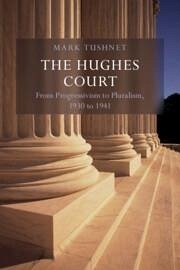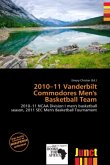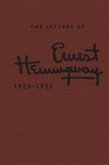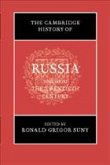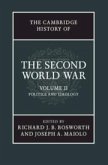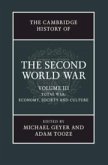- Gebundenes Buch
- Merkliste
- Auf die Merkliste
- Bewerten Bewerten
- Teilen
- Produkt teilen
- Produkterinnerung
- Produkterinnerung
A comprehensive study of the US Supreme Court that explores the transformation of constitutional law from 1930 to 1941.
Andere Kunden interessierten sich auch für
![2010 11 Vanderbilt Commodores Men's Basketball Team 2010 11 Vanderbilt Commodores Men's Basketball Team]() 2010 11 Vanderbilt Commodores Men's Basketball Team24,99 €
2010 11 Vanderbilt Commodores Men's Basketball Team24,99 €![The Mosquito Bowl The Mosquito Bowl]() Buzz BissingerThe Mosquito Bowl25,99 €
Buzz BissingerThe Mosquito Bowl25,99 €![Korean Air Lines YS-11 Hijacking Korean Air Lines YS-11 Hijacking]() Korean Air Lines YS-11 Hijacking24,99 €
Korean Air Lines YS-11 Hijacking24,99 €![The Letters of Ernest Hemingway: Volume 2, 1923-1925 The Letters of Ernest Hemingway: Volume 2, 1923-1925]() Ernest HemingwayThe Letters of Ernest Hemingway: Volume 2, 1923-1925104,99 €
Ernest HemingwayThe Letters of Ernest Hemingway: Volume 2, 1923-1925104,99 €![The Cambridge History of Russia: Volume 3, the Twentieth Century The Cambridge History of Russia: Volume 3, the Twentieth Century]() Ronald Grigor Suny (ed.)The Cambridge History of Russia: Volume 3, the Twentieth Century205,99 €
Ronald Grigor Suny (ed.)The Cambridge History of Russia: Volume 3, the Twentieth Century205,99 €![The Cambridge History of the Second World War, Volume 2 The Cambridge History of the Second World War, Volume 2]() The Cambridge History of the Second World War, Volume 2200,99 €
The Cambridge History of the Second World War, Volume 2200,99 €![The Cambridge History of the Second World War, Volume 3 The Cambridge History of the Second World War, Volume 3]() The Cambridge History of the Second World War, Volume 3200,99 €
The Cambridge History of the Second World War, Volume 3200,99 €-
-
-
A comprehensive study of the US Supreme Court that explores the transformation of constitutional law from 1930 to 1941.
Hinweis: Dieser Artikel kann nur an eine deutsche Lieferadresse ausgeliefert werden.
Hinweis: Dieser Artikel kann nur an eine deutsche Lieferadresse ausgeliefert werden.
Produktdetails
- Produktdetails
- Verlag: Cambridge University Press
- Seitenzahl: 1272
- Erscheinungstermin: 21. April 2022
- Englisch
- Abmessung: 241mm x 163mm x 58mm
- Gewicht: 2132g
- ISBN-13: 9781316515938
- ISBN-10: 1316515931
- Artikelnr.: 62602395
- Herstellerkennzeichnung
- Libri GmbH
- Europaallee 1
- 36244 Bad Hersfeld
- gpsr@libri.de
- Verlag: Cambridge University Press
- Seitenzahl: 1272
- Erscheinungstermin: 21. April 2022
- Englisch
- Abmessung: 241mm x 163mm x 58mm
- Gewicht: 2132g
- ISBN-13: 9781316515938
- ISBN-10: 1316515931
- Artikelnr.: 62602395
- Herstellerkennzeichnung
- Libri GmbH
- Europaallee 1
- 36244 Bad Hersfeld
- gpsr@libri.de
Mark Tushnet is the William Nelson Cromwell Professor of Law emeritus at Harvard Law School. After graduating from Harvard College and Yale Law School, he served as law clerk to Supreme Court Justice Thurgood Marshall. He has written widely on constitutional theory, comparative constitutional law, and US legal and constitutional history. His book The NAACP's Legal Strategy Against Segregated Education (1987) won the Littleton Griswold Prize awarded by the American Historical Association.
Acknowledgments
Introduction
Preface
Part I. The Opening Years: Section A. Setting the Stage
1. Personnel and Organizing Ideas
2. Formulas and Conceptions of Basic Needs: An Overview
3. The Complex World of Simple Formulas
4. Formulas and Considerations of Basic Needs in Business Regulation Cases
Section B. The False Dawn
5. Blaisdell
6. Nebbia
7. The Gold Clause Cases
Section C. Crisis
8. Black Monday 1935
9. Winter 1935-36
10. Spring 1936
11. The Court-Packing Plan
12. Resolution
13. Was There a 'Switch in Time'?
Section D. The New Constitutional Regime
14. After the Storm: Personnel and Organization
15. Consolidating the Scope of National Power
16. Consolidating State Regulation of Business
17. Consolidating Labor Law and Intergovernmental Immunity
18. Toward a Theory of Pluralism
Part II. Continuities: Section A. Administrative Law
19. Administrative Law Introduction
20. Administrative Law Constitutional Limits
21. Administrative Law Presidential Power
22. Administrative Law Courts' Role
Section B. Civil Liberties and Civil Rights
23. The Uncertainty of Theory
24. Progressivism, Prohibition, and Organized Crime
25. Race, Criminal Justice, and 'Labor Defense'
26. Race and Strategic Litigation
27. Radical Political Dissent
28. Radical Religious Dissent
Section C. Justiciability
29. Basic Concepts of Justiciability
30. Sovereign Immunity and Political Questions
31. Regulating Access to the National Courts
32. Erie
33. Erie's Legacy
34. Form and Style in Statutory Interpretation
Part III: New Approaches Begin to Emerge: Section A. Economics
35. New Deal Economics
36. Regulating Strikes
37. Regulating the NLRB
38. The Labor Antitrust Interface
Section B. Civil Liberties After 1937
39. The Justices and the Theories
40. Demonstrations, Picketing, and First Amendment Theories
41. The Jehovah's Witnesses and First Amendment Theories
42. Conclusion
Historiographical Essay
Index.
Introduction
Preface
Part I. The Opening Years: Section A. Setting the Stage
1. Personnel and Organizing Ideas
2. Formulas and Conceptions of Basic Needs: An Overview
3. The Complex World of Simple Formulas
4. Formulas and Considerations of Basic Needs in Business Regulation Cases
Section B. The False Dawn
5. Blaisdell
6. Nebbia
7. The Gold Clause Cases
Section C. Crisis
8. Black Monday 1935
9. Winter 1935-36
10. Spring 1936
11. The Court-Packing Plan
12. Resolution
13. Was There a 'Switch in Time'?
Section D. The New Constitutional Regime
14. After the Storm: Personnel and Organization
15. Consolidating the Scope of National Power
16. Consolidating State Regulation of Business
17. Consolidating Labor Law and Intergovernmental Immunity
18. Toward a Theory of Pluralism
Part II. Continuities: Section A. Administrative Law
19. Administrative Law Introduction
20. Administrative Law Constitutional Limits
21. Administrative Law Presidential Power
22. Administrative Law Courts' Role
Section B. Civil Liberties and Civil Rights
23. The Uncertainty of Theory
24. Progressivism, Prohibition, and Organized Crime
25. Race, Criminal Justice, and 'Labor Defense'
26. Race and Strategic Litigation
27. Radical Political Dissent
28. Radical Religious Dissent
Section C. Justiciability
29. Basic Concepts of Justiciability
30. Sovereign Immunity and Political Questions
31. Regulating Access to the National Courts
32. Erie
33. Erie's Legacy
34. Form and Style in Statutory Interpretation
Part III: New Approaches Begin to Emerge: Section A. Economics
35. New Deal Economics
36. Regulating Strikes
37. Regulating the NLRB
38. The Labor Antitrust Interface
Section B. Civil Liberties After 1937
39. The Justices and the Theories
40. Demonstrations, Picketing, and First Amendment Theories
41. The Jehovah's Witnesses and First Amendment Theories
42. Conclusion
Historiographical Essay
Index.
Acknowledgments
Introduction
Preface
Part I. The Opening Years: Section A. Setting the Stage
1. Personnel and Organizing Ideas
2. Formulas and Conceptions of Basic Needs: An Overview
3. The Complex World of Simple Formulas
4. Formulas and Considerations of Basic Needs in Business Regulation Cases
Section B. The False Dawn
5. Blaisdell
6. Nebbia
7. The Gold Clause Cases
Section C. Crisis
8. Black Monday 1935
9. Winter 1935-36
10. Spring 1936
11. The Court-Packing Plan
12. Resolution
13. Was There a 'Switch in Time'?
Section D. The New Constitutional Regime
14. After the Storm: Personnel and Organization
15. Consolidating the Scope of National Power
16. Consolidating State Regulation of Business
17. Consolidating Labor Law and Intergovernmental Immunity
18. Toward a Theory of Pluralism
Part II. Continuities: Section A. Administrative Law
19. Administrative Law Introduction
20. Administrative Law Constitutional Limits
21. Administrative Law Presidential Power
22. Administrative Law Courts' Role
Section B. Civil Liberties and Civil Rights
23. The Uncertainty of Theory
24. Progressivism, Prohibition, and Organized Crime
25. Race, Criminal Justice, and 'Labor Defense'
26. Race and Strategic Litigation
27. Radical Political Dissent
28. Radical Religious Dissent
Section C. Justiciability
29. Basic Concepts of Justiciability
30. Sovereign Immunity and Political Questions
31. Regulating Access to the National Courts
32. Erie
33. Erie's Legacy
34. Form and Style in Statutory Interpretation
Part III: New Approaches Begin to Emerge: Section A. Economics
35. New Deal Economics
36. Regulating Strikes
37. Regulating the NLRB
38. The Labor Antitrust Interface
Section B. Civil Liberties After 1937
39. The Justices and the Theories
40. Demonstrations, Picketing, and First Amendment Theories
41. The Jehovah's Witnesses and First Amendment Theories
42. Conclusion
Historiographical Essay
Index.
Introduction
Preface
Part I. The Opening Years: Section A. Setting the Stage
1. Personnel and Organizing Ideas
2. Formulas and Conceptions of Basic Needs: An Overview
3. The Complex World of Simple Formulas
4. Formulas and Considerations of Basic Needs in Business Regulation Cases
Section B. The False Dawn
5. Blaisdell
6. Nebbia
7. The Gold Clause Cases
Section C. Crisis
8. Black Monday 1935
9. Winter 1935-36
10. Spring 1936
11. The Court-Packing Plan
12. Resolution
13. Was There a 'Switch in Time'?
Section D. The New Constitutional Regime
14. After the Storm: Personnel and Organization
15. Consolidating the Scope of National Power
16. Consolidating State Regulation of Business
17. Consolidating Labor Law and Intergovernmental Immunity
18. Toward a Theory of Pluralism
Part II. Continuities: Section A. Administrative Law
19. Administrative Law Introduction
20. Administrative Law Constitutional Limits
21. Administrative Law Presidential Power
22. Administrative Law Courts' Role
Section B. Civil Liberties and Civil Rights
23. The Uncertainty of Theory
24. Progressivism, Prohibition, and Organized Crime
25. Race, Criminal Justice, and 'Labor Defense'
26. Race and Strategic Litigation
27. Radical Political Dissent
28. Radical Religious Dissent
Section C. Justiciability
29. Basic Concepts of Justiciability
30. Sovereign Immunity and Political Questions
31. Regulating Access to the National Courts
32. Erie
33. Erie's Legacy
34. Form and Style in Statutory Interpretation
Part III: New Approaches Begin to Emerge: Section A. Economics
35. New Deal Economics
36. Regulating Strikes
37. Regulating the NLRB
38. The Labor Antitrust Interface
Section B. Civil Liberties After 1937
39. The Justices and the Theories
40. Demonstrations, Picketing, and First Amendment Theories
41. The Jehovah's Witnesses and First Amendment Theories
42. Conclusion
Historiographical Essay
Index.

